By far the majority of British Army Land Rovers deployed to Norway on the recent TRJE18 were Wolf 110 models but there were several Pulse 130 ambulances too, writes Bob Morrison.
One graphic released by UK MoD to illustrate the size of the British Army deployment on this massive NATO exercise, the largest held since the fall of the Iron Curtain, showed 25 of these distinctive shape Land Rovers were scheduled to participate. I cannot verify precisely how many did get out there, not least because I did not have the time or the opportunity to visit the main UK base or rear echelon formations during the twelve days I followed the LIVEX, but I was able to snap several of them up at the sharp end where they were mostly providing real time medical cover for the troops on manoeuvres.
When the vehicle which the manufacturer code-named Pulse 130, to differentiate if from the more militarised Wolf 90 and 110 models being developed in parallel but under a different UK MoD requirement, was being developed Land Rover still had a very efficient and knowledgeable Government & Military Operations team headed by the highly respected George Adams. Working closely with Marshall of Cambridge, who had a long history of producing ambulance conversions on various Land Rover versions, the GMO team at Solihull were able to speedily produce a four-stretcher battlefield ambulance design when the UK MoD published its requirements following the return of forces from the Middle East following the 1991 liberation of Kuwait.In February 1992 the Ministry of Defence announced: “A quantity of 500-800 all wheel drive ambulances are required to replace in-service vehicles over a six-year period with a planned life of at least 15 years. The requirement is for a reliable, durable, medium mobility (MMLC), all wheel drive, commercially based four stretcher battlefield ambulance suitable for use on and off roads.”
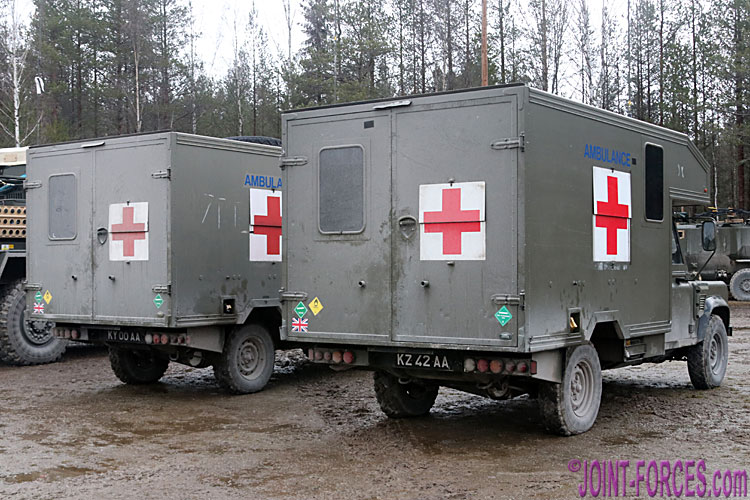
The two vehicles in the lead image photographed from the opposite side – both are designated Ambulance 4×4 4-Stretcher HS and entered service in 1997 [©BM]
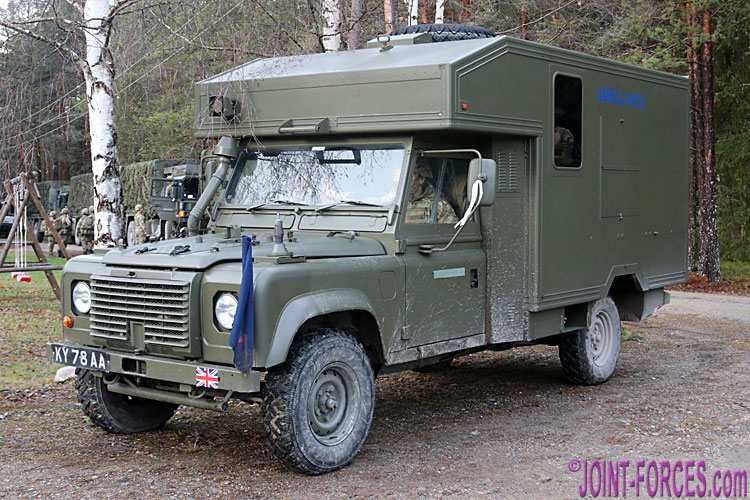
This Pulse ambulance photographed after the ‘Battle For The Bridge At Elvål’ has its Red Cross markings covered up [©BM]
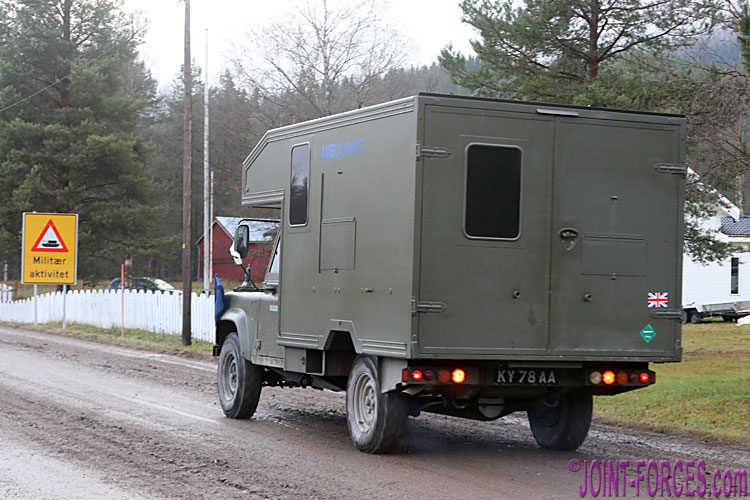
As Red Cross markings are highly visible they are only used in the field when ambulances are in-role [©BM]

A fourth ambulance, serving with 1 R IRISH, leaving the UK at the start of TRIDENT JUNCTURE 18 [©BM]

Here the ambulance is driving onto a rail flatcar prior to travelling to Norway through the Channel Tunnel [©BM]
Although the Defender 130 Pulse has now been in service for over 21 years – i.e. already six years longer than Tender No. LV2b/179 stipulated – a few hundred are still in service undertaking their design role and they still have plenty of life left in them as they are at least the equal of any other softskin air-transportable battlefield ambulance currently in service with NATO nations.
{ images © Bob Morrison }
.
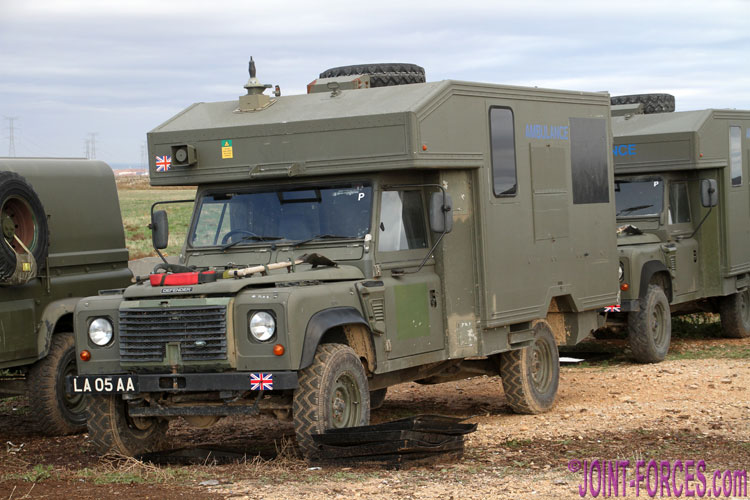
Ambulance LA05AA – here spotted in Chinchilla in Spain where 1 R IRISH were deployed on TRIDENT JUNCTURE 15 also as part of 4 [UK] Multi-National Brigade [©BM]
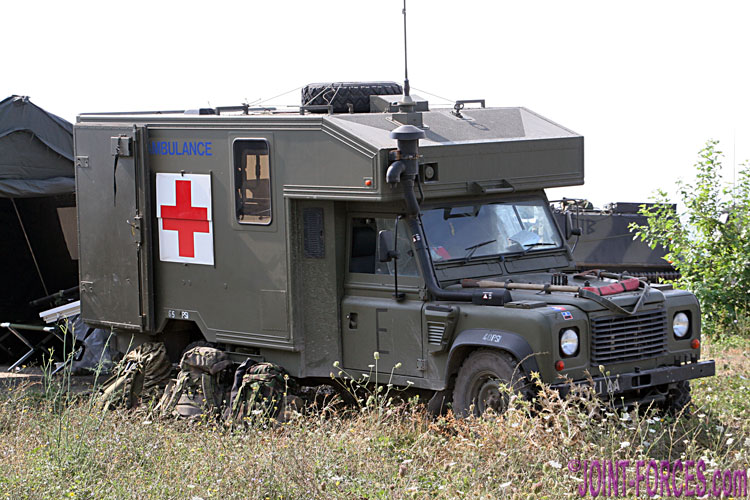
A small number of Defender 130 Pulses were waterproofed for amphibious deployments with 3 Commando Brigade – designation is Ambulance 4×4 4-Stretcher HS Winterised & Semi-waterproofed [©BM]
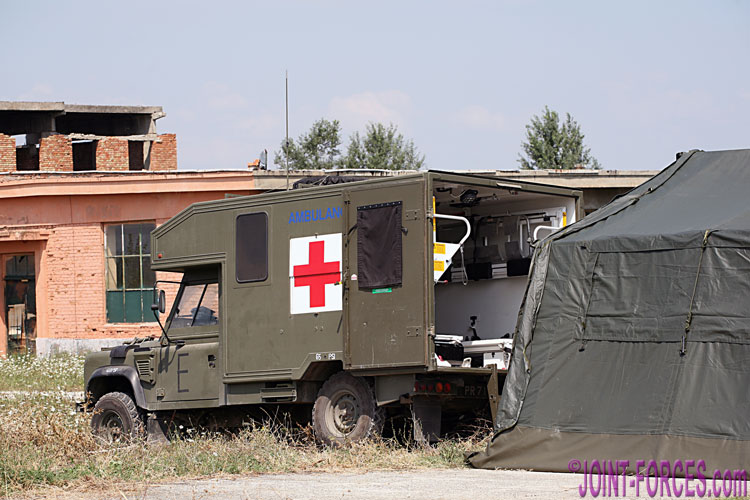
The waterproofed Pulse seen from the other side – it was in Albania supporting a NEO (Non-combatant Evacuation Operation) exercise in 2013 [©BM]


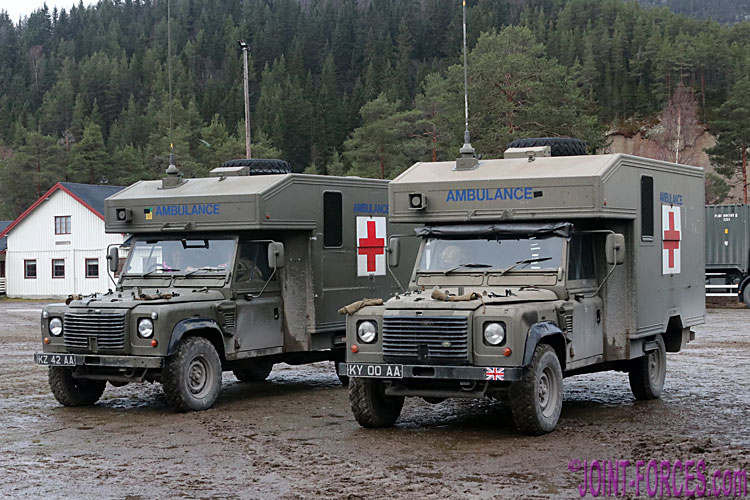
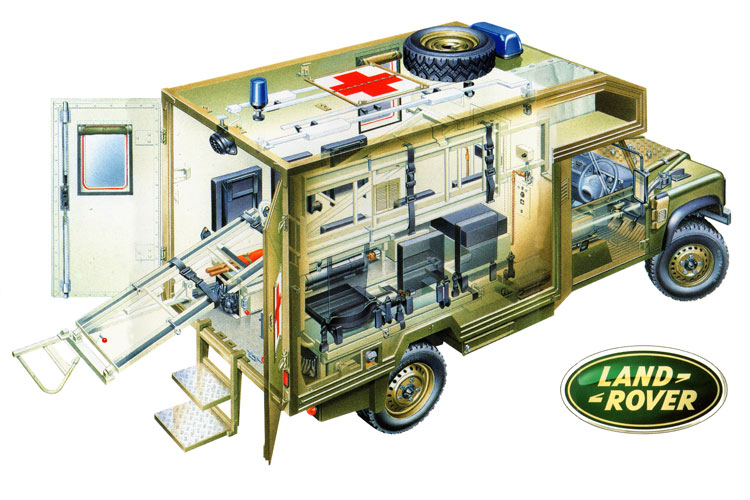


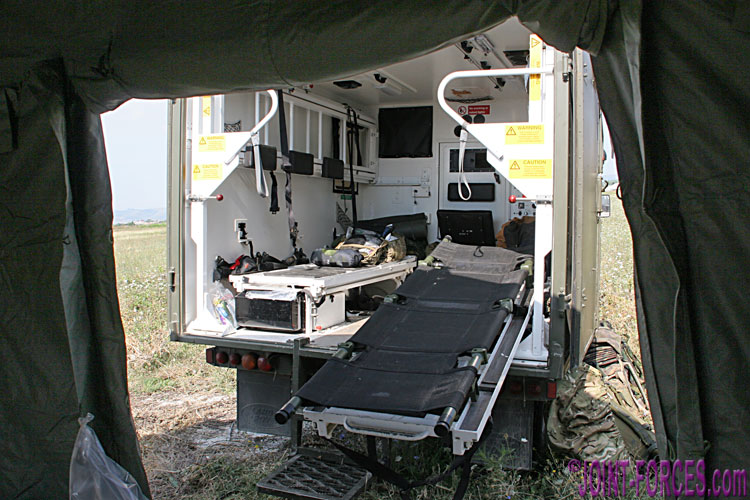


















Pingback : MLR 53 ~ Operation CABRIT Defenders in 2023 | Joint Forces News